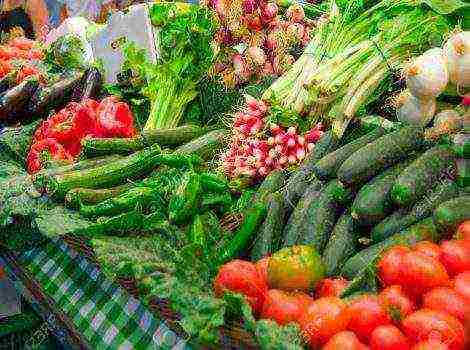Content
“He earned more in a few hours than I did in a month,” recalls Patiy. What he saw amazed him all the more since Anatoly grew up in the family of an agronomist. Since childhood, observing his father's work, he dreamed of how he would grow exotic fruits. And so Patiy decided that it was time to make his dream come true.
To learn more about how to grow fruit, Anatoly began to look for information in libraries and archives. “Then I accidentally found documents that proved that bananas, pineapples and citrus fruits were already grown on the territory of Ukraine,” says the entrepreneur. During the Russian Empire, one of the largest greenhouses was located near the city of Uman. She not only served the needs of wealthy families, but also worked for export.
Starting capital - about 30,000 rubles - the novice agronomist decided to make money by building greenhouses in Siberia. The experience turned out to be useful in an unexpected way. It was then that the future entrepreneur realized: most greenhouses "warm the sky", 70% of the heat simply disappears.
See also: Difficulties of emigration: Ukrainian woman spoke about the pros and cons of life in the USA
Back in Ukraine, Patiy developed a new type of greenhouse. It works like a thermos, and even in the most severe frosts, the temperature inside remains in the range from +20 to +25 degrees. The walls of the structure are only 25 cm wide. Unlike conventional greenhouses, which require hundreds of liters of water and 200 kilowatt pumps for heating, Patiy uses a small 60 watt generator.
The engineer immediately patented his invention. Now the sale of patents is one of the items of his income. For residents of Ukraine it costs 400 euros, for everyone else - 1000 euros. According to the businessman's calculations, 700 farms are already operating under his patent in Ukraine, and about 300 in the countries of the former USSR.
The agronomist acquired the first lemon seedlings in Moscow. Then for 10 years he collaborated with agricultural universities and developed a new variety. In 1994, the results of painstaking work appeared: a new variety of lemons "Kievsky". Plants of this variety bloom several times a year, they are unpretentious to weather conditions, and the weight of their fruits reaches 1.5 kg.
In 2003, Patius bred a dwarf banana tree - 80 cm tall, one of the smallest in the world. The size of the fruits is a maximum of 10 cm. The entrepreneur considers the cultivation of pineapples, which not only give good fruits, but also up to 50 branches, from which new fruit trees can grow, as another achievement. Today the businessman has three greenhouses with a total area of 650 sq. m.
1 sq. m brings $ 400 per year, which in total amounts to more than a quarter of a million dollars in revenue per year. Taxes are not taxed on earnings: since 1993, a law has been in effect that exempts entrepreneurs selling products grown on personal plots from taxation.
See also: How much food can you buy for $ 10 in Kiev, Moscow and Paris
However, Patiy does not make money on fruits - he leaves them for the home table or treats guests. The main point of earning is the sale of seedlings. The average cost of one sprout is 100-200 hryvnia. Citrus trees are best sold. Patiy sold the most expensive seedling in 2010: a coffee tree, from which one can get 800 grams of coffee per year, cost more than 10,000 hryvnias.
The active work of a businessman lasts only three months a year. The rest of the time he travels the world with his family. For the past 13 years, Patiy has been guided by the rule of visiting six new places annually.There he finds new exotic fruits, which he is trying to adapt to the Ukrainian climate. For example, for the past few months, Patiy has been working on breeding Ukrainian mangoes.
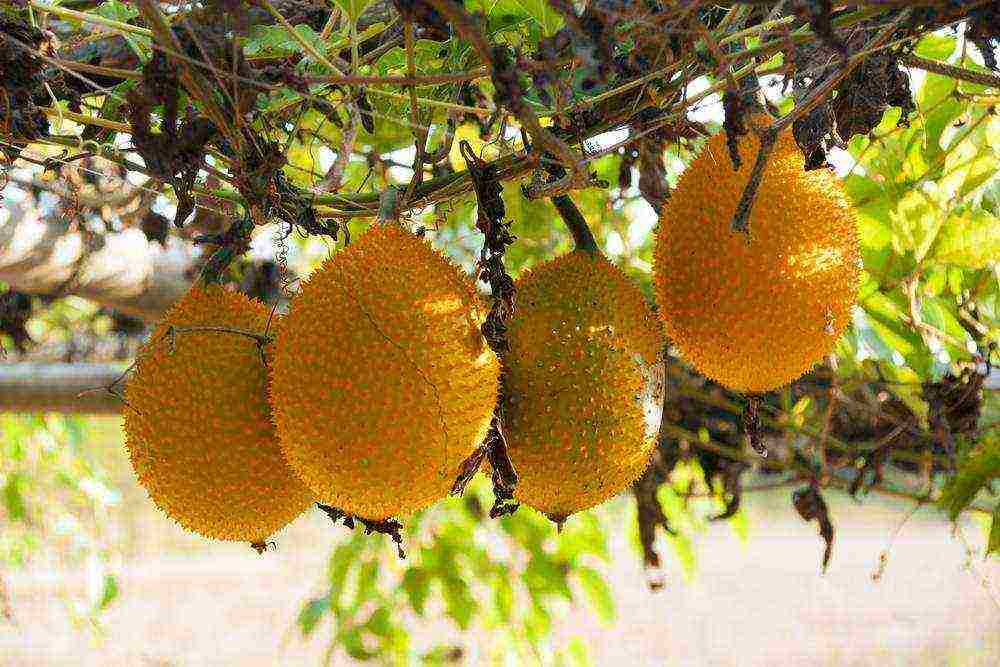
Many different exotic plants are grown in Ukrainian gardens, here are just a few of them.
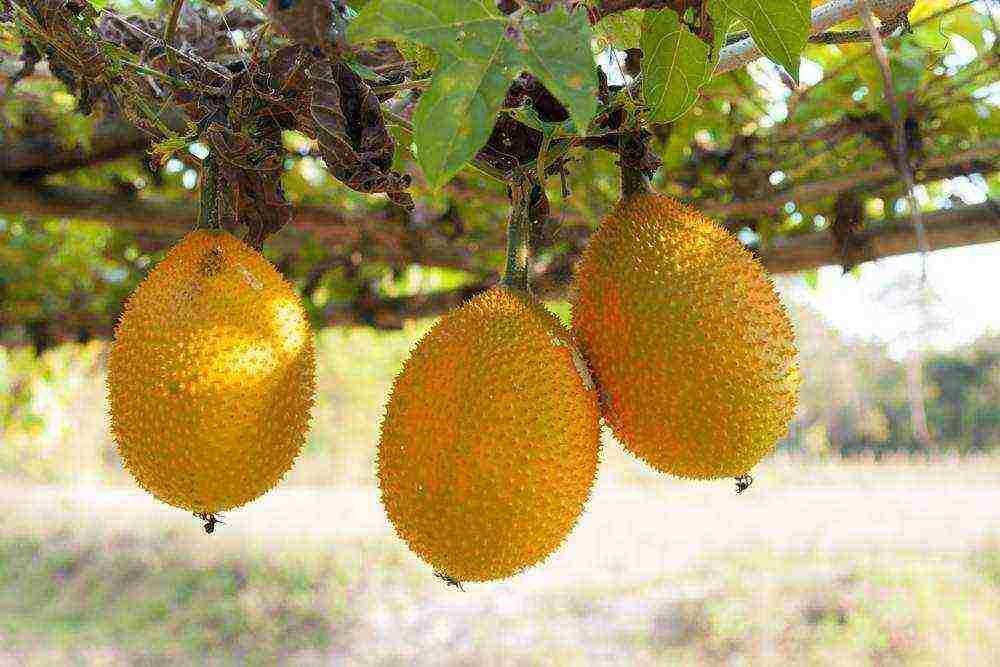 1. Anguria Antilles, or Antilles cucumber (Kiwano)
1. Anguria Antilles, or Antilles cucumber (Kiwano)
A herbaceous vine, which, like Momordica, belongs to the family pumpkin... This plant has many side shoots and carved leaves. Dark green fruits are covered with large thorns, they taste like a cucumber... The average weight of the fruit is 300 g, the length is about 12 cm.
In addition, anguria is decorative and looks original in compositions from various plants. She also thermophilic... A young plant does not tolerate frosts and prolonged cold snaps, but over time it becomes more cold-resistant. Antillean cucumber gives a good harvest: from 3-4 plants occupying 10-12 m2, more than 10 kg of fruit can be harvested.
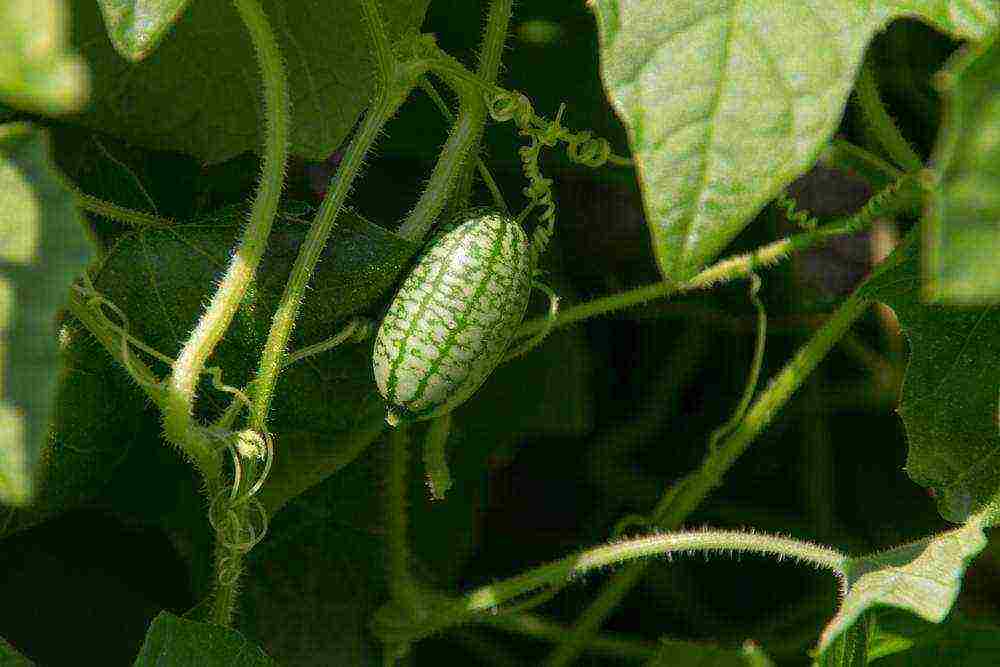 2. Melotria rough, variety "Hummingbird"
2. Melotria rough, variety "Hummingbird"
Annual herbaceous vine from the family pumpkinimported from Africa. It has triangular leaves and shoots up to 3 m long. Flowers are bright yellow, funnel-shaped, bisexual: women grow singly, men grow in several pieces. Vines quickly twine around any support with antennae.
Melotria prefers loose moist soils and needs regular weeding and watering... It is enough to apply top dressing 2 times per season. Fruits up to 2.5 cm in size, with a pleasant sour taste, reminiscent of pickles, are pickled and salted.
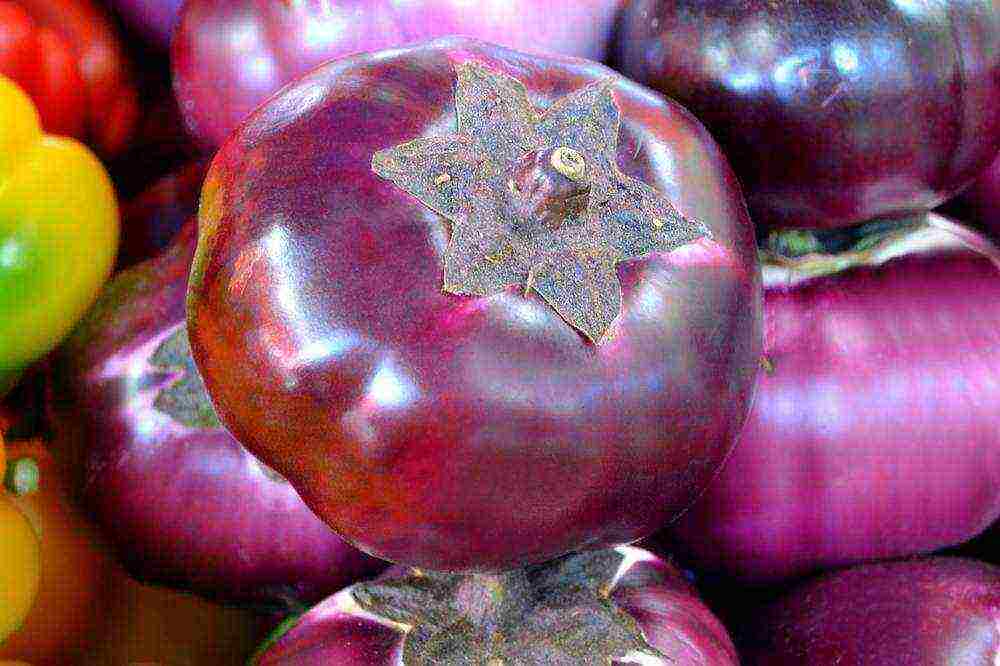 3. Eggplant, grade "Helios"
3. Eggplant, grade "Helios"
An early ripe plant with rounded purple slightly flattened fruits weighing from 300 to 800 g. Their flesh is white, tender and absolutely without bitterness. Fried and stewed eggplant taste like mushroomsbut can be eaten raw by simply grating into a salad. Agrotechnology is no different from that of conventional eggplants.
Seedlings begin to be prepared in February, planted in open ground in May. The container for it should be taken more than usual, so that when planting a lump of fertile soil is as large as possible.
The plant loves loose soil and top dressing, as well as light and warm... The planting rule is one: as far as possible from potatoes, since they have common pests. A good protection against the Colorado potato beetle is a film wall that is pulled over pegs at a height of at least 50 cm and must be buried in the ground. The female beetle cannot overcome such an obstacle and lay eggs.
 4. Cyclantera, or Peruvian cucumber
4. Cyclantera, or Peruvian cucumber
Annual culture of the family pumpkin with a liana-shaped stem and decorative dissected leaves. Cyclantera is grown in seedlings. Seedlings are prepared one and a half months before planting in the ground to a permanent place, that is, at the end of March or early April. In the second half of May, when there is no threat of frost, it is planted in the ground on the southern side of the site.
The Peruvian cucumber grows rapidly. Its greenery is so dense that it can hide unsightly buildings, as well as block out the resting place in the garden from the scorching sun. Cyclanter blooms in late June-July. Flowers are dioecious: male - small, white, collected in small clusters, female - slightly larger, yellowish. The fruits look like small peppers with soft thorns up to 10 cm long. Up to five of them are formed in the axil of each leaf. The fruit tastes like a cucumber and bell peppers simultaneously. Ripe fruits are wonderful in marinades, pickles, and fried fruits resemble the taste of fried beans. Cyclantera fruits are also eaten fresh, for example, in salads.
Entrepreneur Anatoly Patiy told how to make money on it.
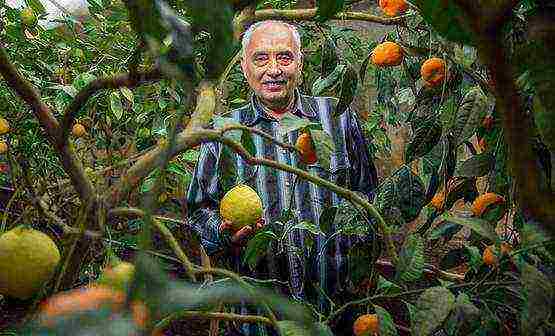 Photo: Alexander Kozachenko
Photo: Alexander Kozachenko
Anatoly Patiy
In the summer of 1983, engineer Anatoly Patiy, as always, was returning from work. On the way, he saw a long line: a smart entrepreneur selling lemon seedlings.“He earned more in a few hours than I did in a month,” recalls Patiy. What he saw amazed him all the more since Anatoly grew up in the family of an agronomist. Since childhood, observing his father's work, he dreamed of how he would grow exotic fruits. And so Patiy decided that it was time to make his dream come true.
To learn more about how to grow fruit, Anatoly began to look for information in libraries and archives. “Then I accidentally found documents that proved that bananas, pineapples and citrus fruits were already grown on the territory of Ukraine,” says the entrepreneur. During the Russian Empire, one of the largest greenhouses was located near the city of Uman. She not only served the needs of wealthy families, but also worked for export.
Starting capital - about 30,000 rubles - the novice agronomist decided to make money by building greenhouses in Siberia. The experience turned out to be useful in an unexpected way. It was then that the future entrepreneur realized: most greenhouses "warm the sky", 70% of the heat simply disappears.
Back in Ukraine, Patiy developed a new type of greenhouse. It works like a thermos, and even in the most severe frosts, the temperature inside remains in the range from +20 to +25 degrees. The walls of the structure are only 25 cm wide. Unlike conventional greenhouses, which require hundreds of liters of water and 200 kilowatt pumps for heating, Patiy uses a small 60 watt generator.
The engineer immediately patented his invention. Now the sale of patents is one of the items of his income. For residents of Ukraine it costs 400 euros, for everyone else - 1000 euros. According to the businessman's calculations, 700 farms are already operating in Ukraine under his patent, and about 300 in the countries of the former USSR.
The agronomist acquired the first lemon seedlings in Moscow. Then for 10 years he collaborated with agricultural universities and developed a new variety. In 1994, the results of painstaking work appeared: a new variety of lemons "Kievsky". Plants of this variety bloom several times a year, they are unpretentious to weather conditions, and the weight of their fruits reaches 1.5 kg.
In 2003, Patius bred a dwarf banana tree - 80 cm tall, one of the smallest in the world. The size of the fruits is a maximum of 10 cm. The entrepreneur considers the cultivation of pineapples, which not only give good fruits, but also up to 50 branches, from which new fruit trees can grow, as another achievement. Today the businessman has three greenhouses with a total area of 650 sq. m.
1 sq. m brings $ 400 per year, which in total amounts to more than a quarter of a million dollars in revenue per year. Taxes are not taxed on earnings: since 1993, a law has been in force that exempts entrepreneurs selling products grown on personal plots from taxation.
However, Patiy does not make money on fruits - he leaves them for the home table or treats guests. The main point of earning is the sale of seedlings. The average cost of one sprout is 100-200 hryvnia. Citrus trees are best sold. Patiy sold the most expensive seedling in 2010: a coffee tree, from which you can get 800 grams of coffee per year, cost more than 10,000 hryvnia.
The active work of a businessman lasts only three months a year. The rest of the time he travels the world with his family. For the past 13 years, Patiy has been guided by the rule of visiting six new places annually. There he finds new exotic fruits, which he is trying to adapt to the Ukrainian climate. For example, for the past few months, Patiy has been working on breeding Ukrainian mangoes.
Entrepreneur Anatoly Patiy told how to make money on it.
 Photo: Alexander Kozachenko
Photo: Alexander Kozachenko
Anatoly Patiy
In the summer of 1983, engineer Anatoly Patiy, as always, was returning from work. On the way, he saw a long line: a smart entrepreneur selling lemon seedlings. “He earned more in a few hours than I did in a month,” recalls Patiy. What he saw amazed him all the more since Anatoly grew up in the family of an agronomist. Since childhood, observing his father's work, he dreamed of how he would grow exotic fruits.And so Patiy decided that it was time to make his dream come true.
To learn more about how to grow fruit, Anatoly began to look for information in libraries and archives. “Then I accidentally found documents that proved that bananas, pineapples and citrus fruits were already grown on the territory of Ukraine,” says the entrepreneur. During the Russian Empire, one of the largest greenhouses was located near the city of Uman. She not only served the needs of wealthy families, but also worked for export.
The start-up capital - about 30,000 rubles - the novice agronomist decided to earn by building greenhouses in Siberia. The experience turned out to be useful in an unexpected way. It was then that the future entrepreneur realized: most greenhouses "warm the sky", 70% of the heat simply disappears.
Back in Ukraine, Patiy developed a new type of greenhouse. It works like a thermos, and even in the most severe frosts, the temperature inside remains in the range from +20 to +25 degrees. The walls of the structure are only 25 cm wide. Unlike conventional greenhouses, which require hundreds of liters of water and 200 kilowatt pumps for heating, Patiy uses a small 60 watt generator.
The engineer immediately patented his invention. Now the sale of patents is one of the items of his income. For residents of Ukraine it costs 400 euros, for everyone else - 1000 euros. According to the businessman's calculations, 700 farms are already operating in Ukraine under his patent, and about 300 in the countries of the former USSR.
The agronomist acquired the first lemon saplings in Moscow. Then for 10 years he collaborated with agricultural universities and developed a new variety. In 1994, the results of painstaking work appeared: a new variety of lemons "Kievsky". Plants of this variety bloom several times a year, they are unpretentious to weather conditions, and the weight of their fruits reaches 1.5 kg.
In 2003, Patius bred a dwarf banana tree - 80 cm tall, one of the smallest in the world. The size of the fruits is a maximum of 10 cm. The entrepreneur considers the cultivation of pineapples, which not only give good fruits, but also up to 50 branches, from which new fruit trees can grow, as another achievement. Today the businessman has three greenhouses with a total area of 650 sq. m.
1 sq. m brings $ 400 per year, which in the end amounts to more than a quarter of a million dollars in revenue per year. Taxes are not taxed on earnings: since 1993, a law has been in effect that exempts entrepreneurs who sell products grown on personal plots from taxation.
However, Patiy does not make money on fruits - he leaves them for the home table or treats guests. The main point of earning is the sale of seedlings. The average cost of one sprout is 100-200 hryvnia. Citrus trees are best sold. Patiy sold the most expensive seedling in 2010: a coffee tree, from which you can get 800 grams of coffee per year, cost more than 10,000 hryvnia.
The active work of a businessman lasts only three months a year. The rest of the time he travels the world with his family. For the past 13 years, Patiy has been guided by the rule of visiting six new places annually. There he finds new exotic fruits, which he is trying to adapt to the Ukrainian climate. For example, for the past few months, Patiy has been working on breeding Ukrainian mangoes.

